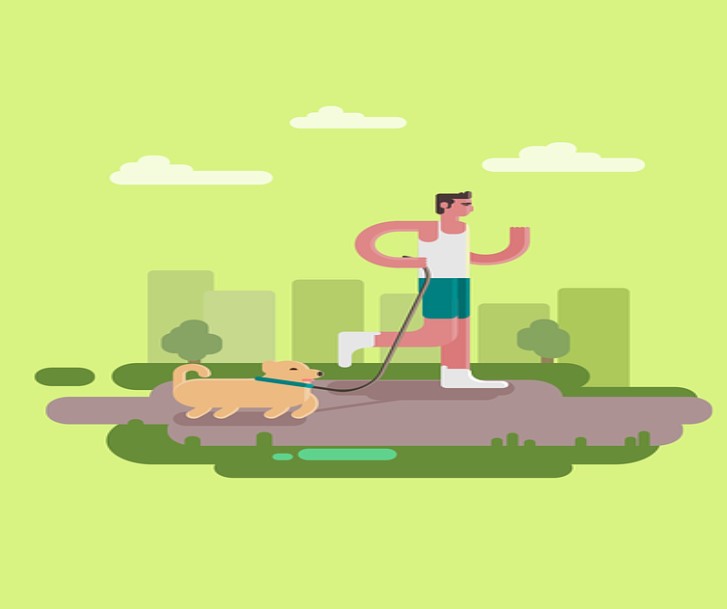Reactive dogs can find the hectic urban atmosphere a source of agitation and fear, making city life challenging for pet parents. In some cases, reactivity is based on a need to release pent-up energy. When living in the city, pet parents often live in apartments or townhomes without yards.
This means exercise and playtime are limited to the inside of the home or during walks. As a pet parent, you’ll need to be more creative to ensure the canine gets enough mental stimulation and plenty of exercise.
In doing so, stress and anxiety can be reduced, and the pup will be less bored, each contributing to reactivity.
A dog training program is a key strategy, particularly for pet parents unsure where to start when trying to curb the behavior. Qualified professionals like those at Newark’s Sit Means Sit develop plans to address specific challenges and needs.
They will also introduce resources in the city where parents can interact with others facing the same behavioral challenges. You and your dog can thrive in the urban environment by taking advantage of quality training programs and pursuing community feedback.
Understanding The Reactive Pup
Navigating urban life can be challenging for reactive dogs and pet parents who prefer the atmosphere. Common behavior associated with reactivity includes incessant barking, lunging, and growling at things in the surroundings that startle the pup. It can consist of people, object, animals, sounds, and more.
The underlying cause can be related fear, lack of training such as socializing, genetics, frustration, or a trauma. A priority is to recognize that reactive dogs are trying to cope with the emotions they’re experiencing. Their goal is to regain control and safety in their space.
In order to manage the behavior, identifying what’s startling your pup is essential so a training professional can develop an effective plan.
A reputable trainer focuses on consistency and patience to achieve optimal comfortability and confidence for the canine in his setting. Visit https://www.dogpossibleaustin.com/blog/leash-gremlins-need-love-too-help-for-reactive-dogs for guidance on help for reactive dogs.
Establishing a positive atmosphere
Creating a comfortable, safe home environment is essential when introducing a pup to an urban lifestyle. One key element is a designated safe space where the canine can readily escape if he feels frightened or stressed. The area should be warm and inviting, with favorite toys, soft blankets, and treats.
In that same vein, pups feel more safe and secure when a consistent daily routine is established. A structured environment helps to reduce the stress level. That means the dog will learn when to anticipate his meals, exercise, playtime, and sleep. These activities should happen at the same time each day.
When developing a schedule, rules, and boundaries should also be included. Dogs must know what is acceptable and what won’t be accepted in the home. This is part of having structure in a positive home atmosphere, which will ultimately help when trying to manage the canine’s reactive behavior in the city.
Techniques for reactivity training
Various training techniques work to help reactive dogs cope with their fear and stress when living in a city.
- Basic obedience
Trainers develop a foundation for all pups when teaching basic obedience. This is particularly vital for reactive dogs. These pups are easier to work with under more stressful circumstances when they understand and can respond to essential commands.
This open communication helps the trainer and you as the pet parent establish trust with the canine.
- Desensitizing/Counterconditioning
Desensitization and counterconditioning are two effective techniques trainers use to reduce pups’ feelings of anxiety and fear. When desensitizing a dog to a trigger, the pup is gradually exposed to the cause of the behavior.
Counterconditioning involves training the canine to view the trigger as a positive instead of seeing it as a threat. The trainer will use a favorite food or toy to associate with the trigger.
Alongside their most effective techniques, trainers use positive reinforcement and force-free methods to improve behavior so dogs can better cope with their urban lifestyle. Click to learn how to train a reactive dog to be calm and obedient.
Maneuvering the outside environment
When maneuvering around a hectic city hub with a reactive dog, selecting the route carefully and finding a good time is essential. You want to avoid the heaviest traffic and overcrowded areas.
Dogs that are quickly overwhelmed would do better in the early morning or evening when the people and traffic are light.
Less traveled routes and those in lower populated areas are ideal for walking the reactive dog with fewer chances of running into triggers. When the pup is away from the city’s hub, he’s less likely to be overwhelmed or stressed, preventing an explosive response.
Progression and setbacks
With reactivity training, it’s vital to remember that the dog’s progress will be gradual and slow, moving at his pace. You want to avoid having unrealistic expectations or trying rush your pup through a program. This can only result in added stress and frustration.
When you see progress, document what you feel is working well for your canine and list the things that you feel need adjusting. You can track your dog’s behavior with each walk based on the reactions and how he’s being triggered. These details will help the trainer plan for future sessions.
With the program, goals can be set for the pup to work toward like passing heavy traffic without a reaction. As the pup achieves goals, the difficulty increases until he can walk through the heart of the city with no stress.
You want to ensure the trainer you work with has a flexible philosophy and will adjust their program when things aren’t working. Sessions that are effective for one pup might be inadequate for another. When you don’t see progress with the plan your trainer is using, it’s time they reconsider the strategy.
The overall objective is to increase the reactive dog’s comfort level and confidence so he feels safe to navigate his life in the big city and can do so successfully.



